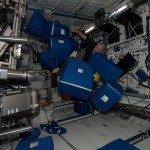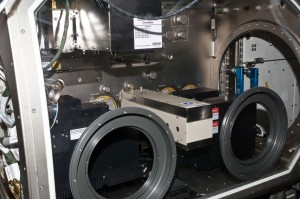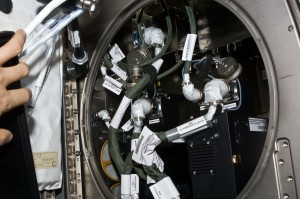Fluids and gases are never at rest. This statement is in apparent contradiction with our experience: when we pour water in a glass and wait until all flows have disappeared and the temperature of the liquid is in equilibrium with that of the room, we see that water appears to be completely at rest. However, if we were able to see the individual molecules of water with a very powerful microscope, we would discover that they are continuously moving and collide with each other following frantic, random paths, even if the liquid appears to be quiescent (dormant, inert, inactive) to the naked eye.
Scientists are interested in observing and measuring such movements because they reveal important, practical information: how fast does heat spread in a fluid? How fast do liquid mixtures mix? Such phenomena occur in the absence of a macroscopic flow, that is when the fluid appears to be at rest, and are called heat and mass diffusion respectively.
While the theoretical prediction of heat and mass diffusion is still quite challenging, its measurement is a standard laboratory practice, but may become extremely difficult or impossible when dealing with mixtures of many liquids. Such measurements need to be carried out when the fluid is quiescent, a condition sometimes impossible to achieve on ground.This is precisely the objective of the DSC (Diffusion & Soret Coefficients) experiment which was completed last Monday (16 January) by André Kuipers on board the International Space Station: the measurement of diffusion in mixtures of liquids.
Using very sensitive optical techniques (of the Selectable Optical Diagnostic Instrument or SODI), it is possible to measure mass diffusion, compare with current theories, and improve our present understanding of how molecules move in liquid mixtures.
The experiment hardware for this DSC experiment was installed in the Microgravity Science Glovebox (MSG) in November 2011, before André arrived on the ISS. André’s preparations allowed good and almost-continuous performance of the scientific runs. He had for example exchanged a power board in the Microgravity Science Glovebox at the end of December, and he and his colleagues regularly swapped the flash-disks on which all the science data and images are collected. On Monday André completed the experiment by removing the experiment hardware from the Microgravity Science Glovebox (MSG) and stowing it.
Between the start and the completion of the experiment, the work of André and his colleagues in the ISS and the work of the operations, development and science teams on the ground allowed the completion of about 50 scientific runs. Plenty of data and images on how these fluids behave for the scientists to now dig into and analyse in detail! The results will be used by the large team of scientists involved in the project to try to understand which of the many existing theories for mass diffusion is correctly predicting the experimental behaviour.This type of research has a lot of possible applications and benefits for us on Earth as well, as diffusion of heat or mass are present everywhere in nature and play a key role in many industrial and scientific processes such as deposition or separation techniques. One example of a concrete application of this research would be refinement of computer models of oil fields. So you can imagine we are all very much looking forward to the scientific publications!




Discussion: one comment
I must had that yes, we have very high quality results with the images downloaded during the missions. Data extraction needs the large quatity of images that are strored on board for the moment.
And also that DSC is an experiment needing microgravity because fluids studied in it are multicomponent molecular liquids, whose study on earth is presently hampered by convection and lack of any knowledge on more than two component diffusion.
Thanks for this pictures nd info that you gave here !